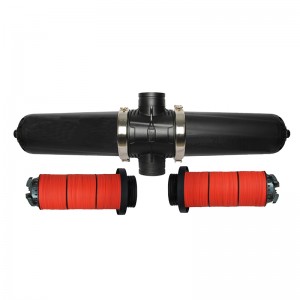A plastic disc filter is a type of irrigation filter that uses stacked plastic discs with grooves or ridges to filter out debris and particles from water. Here’s a detailed explanation of how a plastic disc filter works:
Water Inlet:
The water enters the filter through an inlet pipe or connection. It is important to ensure that the water flow enters the filter in the correct direction, typically indicated by an arrow on the filter housing.
Pre-Filtration:
Before reaching the disc assembly, the water first passes through a pre-filtration stage. This stage typically consists of a coarse mesh or screen that captures larger debris such as leaves, twigs, and rocks. This initial filtration helps prevent the disc stack from clogging too quickly.

Disc Stack:
The main filtering component of a plastic disc filter is the disc stack. The stack is made up of several circular plastic discs, each with grooves or ridges on both sides. These grooves create a maze-like path for the water to flow through, trapping and collecting particles as the water passes through the gaps between the discs.
Filtration Process:
As water flows through the disc stack, particles suspended in the water are trapped by the grooves or ridges on the discs. The particles gradually build up on the surface of the discs, forming a layer of captured debris.
Gradual Clogging:
Over time, as more particles accumulate on the disc surfaces, the filter becomes gradually clogged. The clogging process is typically slow and can be monitored by observing changes in the pressure gauge or flow rate of the system. When the pressure differential across the filter reaches a certain threshold, it indicates that the filter needs cleaning or maintenance.
Cleaning and Maintenance:
To clean a plastic disc filter, the water flow is temporarily stopped or diverted. The filter housing is then opened, and the disc stack is carefully removed. The accumulated debris is cleaned or flushed away using water, brushes, or other appropriate methods. The discs are then re-stacked and placed back into the filter housing.
Water Outlet:
After passing through the disc stack, the filtered water exits the filter through an outlet pipe or connection. The filtered water is now free from most debris and can be distributed for irrigation purposes.
Plastic disc filters offer efficient filtration and are suitable for a wide range of irrigation applications. They can handle high flow rates and are designed to provide reliable and continuous filtration with minimal maintenance. The frequency of cleaning and maintenance will depend on factors such as the quality of the water source and the amount of debris present.
